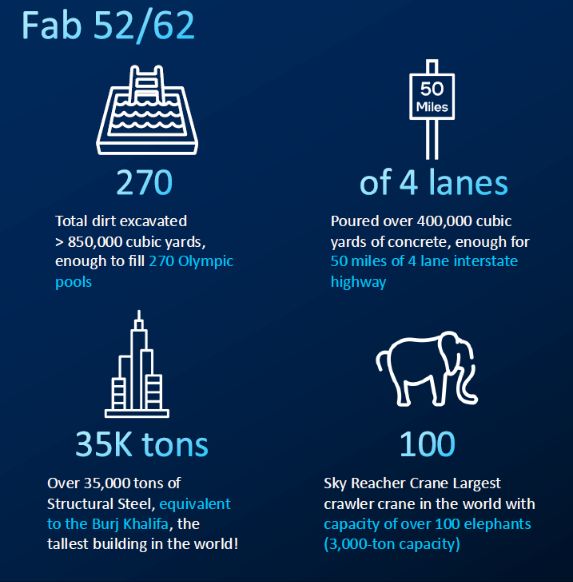End-user insight: An Intel guide to Megaprojects
Share this insight
At Ultrafacility 2024, Intel’s Vice President of Construction for New Mexico, Costa Rica, and Arizona, Matt Ward, shared how Intel is tackling the challenges of building facilities at unprecedented scale and laid out a guide to the strategies and innovations driving its megaprojects. These insights lead directly into Ultrafacility 2025’s theme ‘Redefining Resilience’, ensuring facilities are designed not only for scale, but also for sustainability, operational agility, and long-term adaptability in this new era of transformative manufacturing.
The semiconductor industry is growing rapidly in response to the AI revolution, Ward stated; “There are varying estimates of where the semiconductor industry is going to go, but by most projections it is expected to double from a market today of $664 billion (2024), to somewhere close to a trillion by the end of the decade, and triple by the first half of the next decade.”. As a result, more fabs are being built, and at a larger scale than ever before - shown by the scale of Intel’s Ocotillo fabs 52 and 62 below.

Headwinds and challenges
“As we grow our supply chains, there are issues with the logistics of a complex global network and the associated lead times,” Ward explained. He added that at the scale of these megaprojects, the complexity extends well beyond sourcing: “It’s about how to track and manage all the materials and the status. The sheer data volume of a mega project is immense, with information flowing constantly across hundreds of trades, contractors, and systems providers”.
Ward likened the workforce logistics to running a small city, thousands of workers needing to access the site, coordinate tasks, and move materials efficiently, all while sharing the space with countless other teams racing to deliver on tight schedules.
Intel’s Actions and Integrated Approach
Ward explained that Intel uses a range of solutions to manage its megaproject sites effectively. “Starting with people, how do we keep them safe, how do we engage with those teams to grow and develop them,” he said, emphasizing the importance of training to unlock productivity. Additionally, Intel has invested heavily in governance and digital systems that give teams the tools to process the massive flow of project data.
Ward stressed that it is a holistic process, beginning with how designs are packaged and shared across trade partners to set projects up for success from the outset. This means creating schedules with the right level of detail to track progress, manage scope and budget in real time, and coordinate thousands of workers on-site. Proper procurement and sequencing are equally critical, ensuring that materials, workforce, and partners align at every stage of the project lifecycle to deliver on time.
Innovations Fuelling the Future
To apply these approaches, one major focus is repeatable design. “Intel is seeking to break some of the paradigms of our past and identify where we can design our facilities from a repeatable perspective, while enabling the configurability that may still be required,” he said. This balance is critical to account for differences in building codes, site climates, and environmental considerations, while also adapting each facility to evolving technology nodes.
Intel is also increasingly modularizing its systems, ranging from prefabricated equipment bundles to complex preassemblies, to full offsite fabrication such as complete water chiller plants. “We look for opportunities to build components at sites with specialized expertise and then deliver them for rapid installation with minimal onsite resources,” noted Ward. This approach speeds construction and improves efficiency, but requires sophisticated logistics, including precision in timing and transportation.
Finally, Intel is advancing digital solutions to deal with the masses of project data. “The data volume is now so great it’s not possible for humans to aggregate it and turn it into usable information,” Ward said. To address this, Intel has deployed AI and computer vision for safety monitoring and automated progress tracking, as well as machine learning models that detect design clashes before they cause issues in the field. These tools not only improve safety and quality but also reduce costs and save valuable construction time.
Ward closed out the presentation by stressing that these actions are necessary to leverage the opportunity currently held by the industry. With semiconductor demand set to multiply over the next decade, he argued that only by evolving construction practices, embracing innovation, and mastering megaproject execution will companies be able to deliver at the scale required to power the future of technology. A year later, the message remains just as relevant as the industry confronts greater uncertainty while simultaneously preparing for the unprecedented demand driven by the AI revolution.

